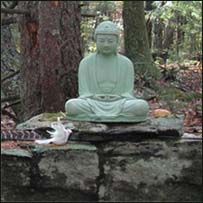|
|
 |
Please support Dharma Seed with a 2025 year-end gift.
Your donations allow us to offer these teachings online to all.

|

|

|
The greatest gift is the
gift of the teachings
|
|

|
| |
|
Dharma Talks
|
2019-05-16
Patience
49:56
|
|
Kate Munding
|
|
|
Patience in the Buddhist tradition is seen as a quality that becomes polished as we awaken our minds and hearts. The cultivation of patience becomes an art form; fluidly brought into the moment, imbued with flexibility, mindfulness, and Metta (loving-kindness). We need this quality to help us meet our selves, our neighbors, and the world with openness. Patience can help us be more grounded and present when we face that which makes us angry, fearful, or confused.
|
|
Insight Meditation Community of Berkeley
:
IMCB Regular Talks
|
|
|
2019-05-07
Equanimity
52:39
|
|
Stephen Fulder
|
|
|
Equanimity is a key spiritual faculty which allows us to face the known and the unknown, the ecstasies and the despairs, with steadiness and lightness. Equanimity helps us engage with life from an unlimited and interconnected perspective. In this talk Stephen Fulder stresses the role of equanimity in our practice and life, how to develop it and use it to let the world in, not keep it out.
|
|
Insight Meditation South Bay - Silicon Valley
|
|
|
|
|